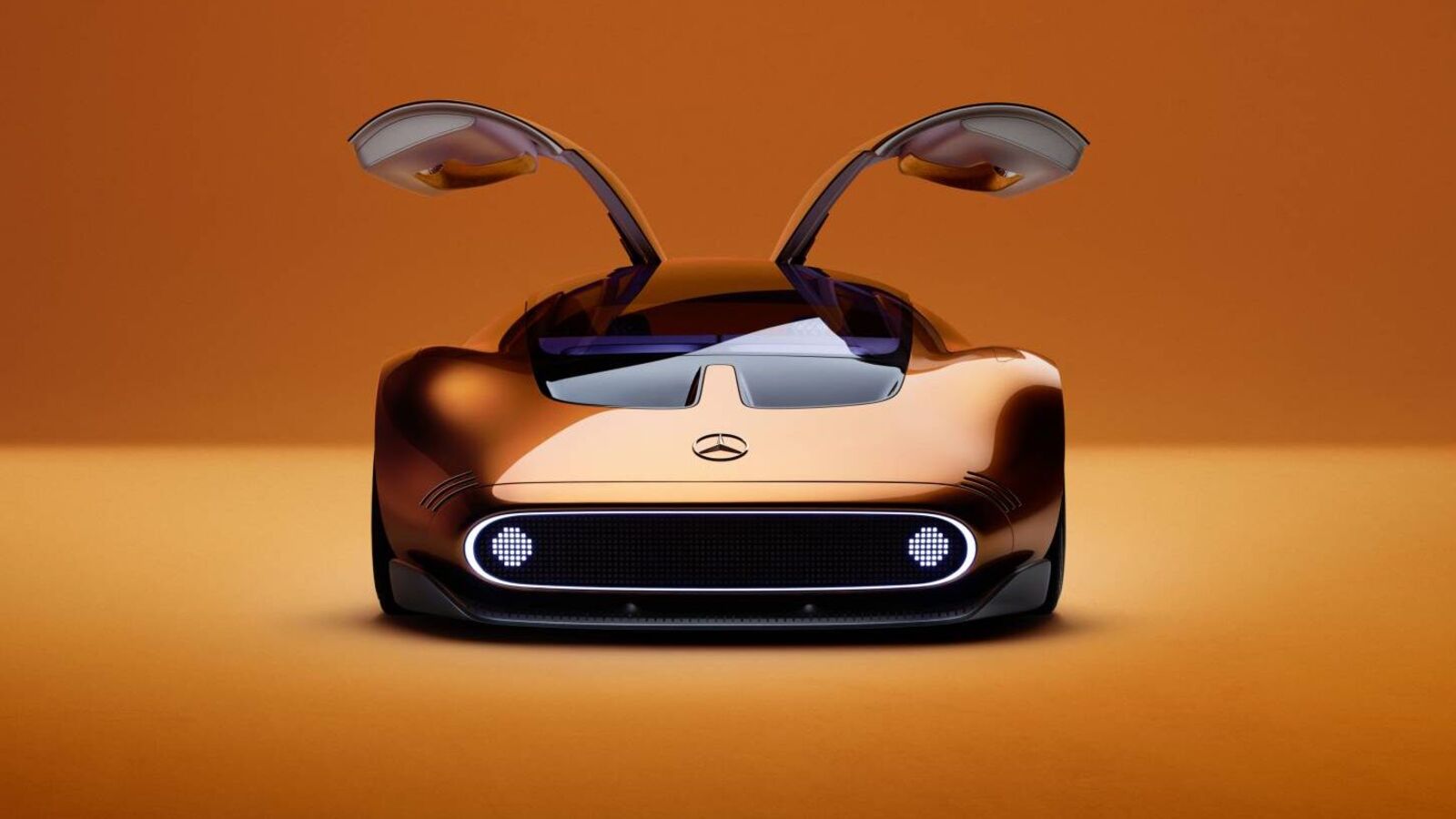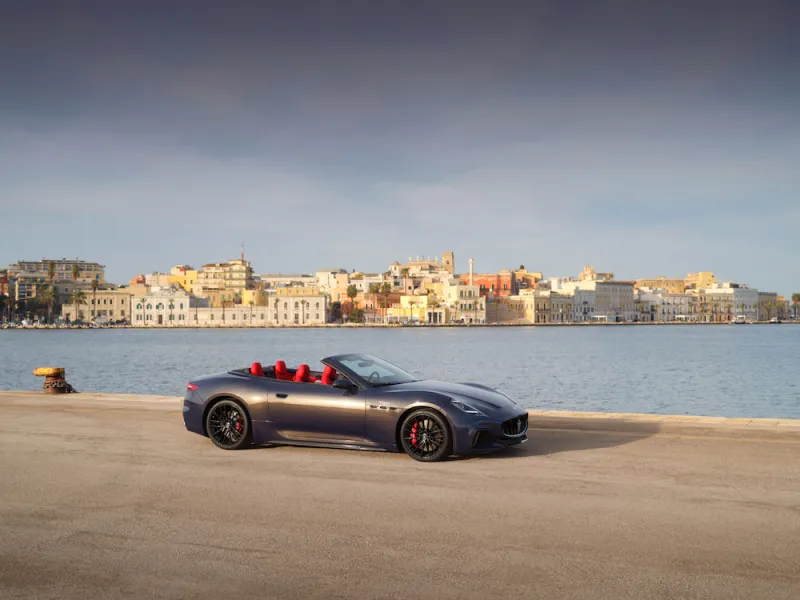The iconic Gullwing is back! Inspired by the iconic C 111, the extraordinary Mercedes-Benz Vision One-Eleven showcases a highly dynamic design language and innovative all-electric drive technology..
The supercar silhouette is characterised by skilful execution of the signature Mercedes-Benz One-Bow design that is a marker of its 21st century style. The development of this design underscores the positioning of the Mercedes-Benz brand, which stands for ICONIC LUXURY. Its technical highlights include the extremely powerful and highly efficient axial-flux motor developed by electric motor specialist YASA. The British company has been a 100-percent subsidiary of Mercedes-Benz AG since July 2021.
The Mercedes-Benz Vision One-Eleven is inspired by the tradition of the legendary C 111 experimental vehicles from the 1960s and 70s, which were used to test revolutionary Wankel and turbodiesel engines. They were also prototypes for testing polymer-based bodyshells. The extremely (aero)dynamic mid-engine sports cars are considered design icons of their era, not least due to their distinctive gullwing doors and eye-catching orange-and-black paintwork.
The body of the Mercedes-Benz Vision One-Eleven centres on skilful execution of the One-Bow design. From the low-slung front end to the muscular hind quarters, it runs in a smooth bow that endows the just 1,170 mm-high vehicle silhouette with an extremely sculptural feel. Further notable features of the side view include the flush-fit gullwing doors and large-diameter wheels. The wheel design incorporates powerfully structured elements evocative of electric motor windings – a clear indicator of the state-of-the-art, all-electric powertrain underpinning the Mercedes-Benz Vision One-Eleven.

From the frontal aspect, too, the Mercedes-Benz Vision One-Eleven is powerfully evocative of the C 111. In detail, however, there are striking differences: One stand-out example is the distinctive front end, which on both vehicles consists of a low-lying rectangular element with rounded ends left and right. On the C 111, this is a closed plastic element with a honeycomb structure, fitted with round foglamps. The corresponding part on the Vision One-Eleven appears very similar at first glance. However, upon closer inspection, it reveals itself as a high-tech feature. The panel is a flexible external display with a 3D pixelated look. It interprets the C 111’s characteristic round lights in digitised form and can also convey messages to other road users.
Inside, the Mercedes-Benz Vision One-Eleven presents the first sports car interior with a lounge concept. It reflects the paradigm shift from self-driven sports car to autonomous electric vehicle within the super sportscar segment and unites two completely different states of being. In race mode with the backrest upright and the compact driver-oriented touchscreen, the interior becomes that of a minimalist driving machine. Conversely, in lounge mode, the seats are fully integrated into the interior sculpture, which merges sills, centre tunnel and luggage compartment into a single unit.

This creates a whole new, exceptionally airy spatial concept. In contrast to previous mid-engine sports cars, it takes advantage of the compact proportions of electric motors to extend the interior rearwards. Consequently, the lounge-like interior invites occupants to take their time and relax – a completely new approach for the sports car of the future.
Technology highlights include a new battery concept featuring high-performance liquid-cooled cylindrical cells with a novel cell chemistry. Once more, the extensive knowledge of the motorsport experts from Mercedes-AMG High Performance Powertrain in Brixworth found its way into this promising concept for future performance-oriented batteries. Aside from that, the Vision One-Eleven features two exceptionally powerful and advanced axial-flux motors from YASA. Mercedes-Benz is developing this technology together with YASA to large scale production maturity for its next-generation electric drives. YASA is a British electric-motor specialist based in Oxford and has been a 100-percent subsidiary of Mercedes-Benz AG since July 2021. The company has thus secured access to a unique future technology that has the potential to take electric mobility to a new level of performance.
Alongside its power and torque density, another major benefit is the narrow package, which reduces both its weight and dimensions. The weight of an axial-flux motor is just one third of that of current electric motors with the same power output. At the same time, it requires just one-third of the space occupied by a radial-flux motor. This opens up completely new options for engineers as well as new freedoms in the design of an electric vehicle as demonstrated by the Vision One-Eleven.





